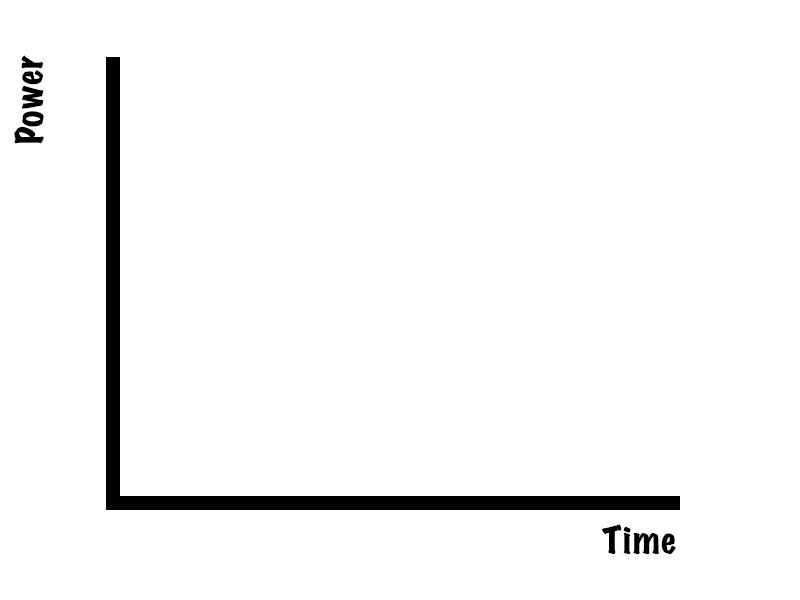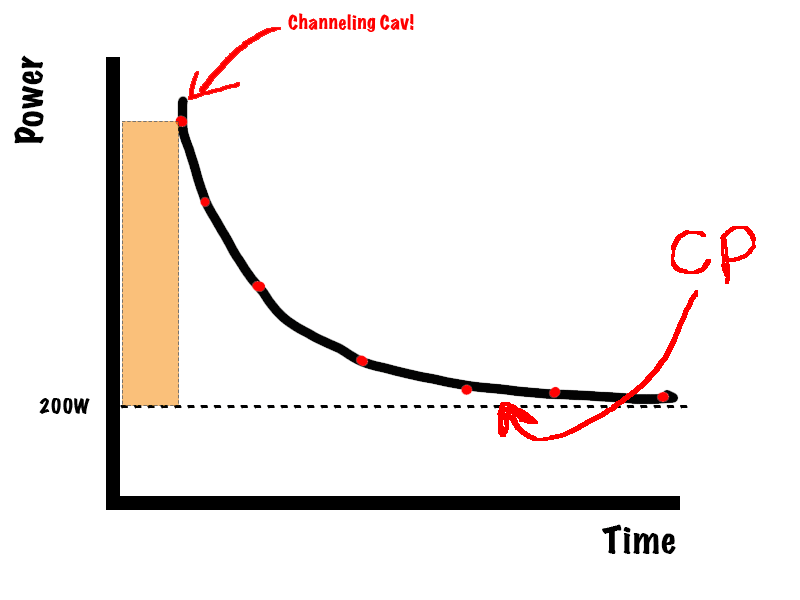You may have heard the analogy: You start off every race with a box of matches. Every time you make an effort, you burn a match (or two, or three). When you've used all your matches, you're done. Knees fall off, collapse, lose. Sprint up out of the swim: matches burned. Surge out of T1 on the bike to impress the crowd: matches burned. Power up that hill: matches burned.
In this article, we'll look at the physiology behind the matchbox, and then discuss the relevance to endurance sports. Understanding this piece of science is critical to your race pacing.
In some sports, you can't avoid burning matches - you may be forced to respond to the circumstances. You may need to accelerate hard to stay with the peloton in a cycle race, or jump on the pedals to get up a steep rock garden on the mountain bike. However, in long course triathlon, you get to pick and choose where you expend your energy. It is absolutely essential that you manage your energy expenditure throughout the event, or you're going to be enjoying the scenery as you walk the marathon (that's if you avoid the dreaded 'DNF').
We'll talk about cycle power in this article, but you could just as easily use Critical Swim Speed or Critical Velocity or Pace if you wanted to discuss matches in terms of swimming or running.
Now, lets say we headed down to a nice smooth bike track, and I sent you off to do some maximal efforts. We start off with a 10 second sprint - as hard as you can. You'll be channeling Mark Cavendish at the end of the final stage of Le Tour, and bang out 1000W. After your magnificent effort, we let you have a good rest, and then I ask you to do the same for 20s, 30s, 5 minutes, 10 minutes... and so on. Each time, your average power will be a bit less. You'll produce some big numbers for the short intervals, but as the intervals get longer, you'll have to drop your power to be able to make it to the end.
Then we take all that data, and draw a pretty picture: We'll make a graph of the power you produced for each interval - at 10s, we'll put a little red dot next to 1000W, at 20s, a dot at 800W, and so on - and then we'll join the dots:

We'll end up with a curve. You'll notice that as time goes on, the curve appears to flatten - the amount of power you can hold at 20 min, 30 min, an hour, starts to look very similar. We call this your Critical Power - it is essentially the power that you can hold for a very long time. If you've ever ridden a 25km or one hour time trial, you'll know what this power output feels like - it's uncomfortable, and it's not a happy place to be, but you know you can hold it for the duration of the event. It's a similar concept to Andy Coggan's FTP - we've just arrived at it in a different way.
The importance of your Critical Power is that if you stay at or below it, you can keep going. As soon as you go above it though, your days (well, your minutes, or even seconds) are numbered. Below CP, you're using aerobic power predominantly. As you go above it, you're tapping into anaerobic energy systems.
Let's have some fun with that graph: Let's draw some pretty coloured boxes:
For each of those original sprint efforts that we did, we can draw a rectangle above our Critical Power line. For the short sprints, the rectangle will be tall and thin - like 1000W for 10s (orange in the pic). For the longer sprints, the rectangle gets fatter, but shorter (green box). For example, over the 5 minute sprint, you may only have managed 300W.

Now, my electronic drawing skillz are not great, but whatever the shape of those rectangles - tall & thin or short & fat - they always have the same internal area. It's this area that represents your box of matches. Actually, it's probably better to think of it as a battery. It's a small, finite amount of energy. We used to call this store of energy your Anaerobic Work Capacity, but we've changed the name to W' (pronounced Double-you Prime (No relation to that Transformer chap, Optimus Prime, that likes to cause mayhem and save the world)). This is because a) there are in fact aerobic elements to this energy store, b) it's easier to commit Maths with W', and c) W' just sounds so much more sexy and mysterious.
If you use your iPhone to watch cat video's on YouTube, your battery will run down very quickly. If all you do is send the occasional text, the battery will last a lot longer. It's exactly the same with your W' battery or matches - you can burn it all in one, huge effort, or you can burn it a little more slowly over a longer period of time. Either way, you have a finite reserve, and when it's gone it's gone.
The good news is that, like your phone battery, W' is rechargeable. As soon as you drop below your CP again, W' will begin to recharge. Sadly, just like that phone battery again, it takes a long time to recharge - much longer than it took to use up. The further you drop below CP, the quicker you will recharge. So if your CP is 200W, and you drop to 150W, your battery will take a lot longer to recharge than if you dropped to 50W. Equally, if we look at two athletes who have just burned the same number of matches and drop to 100W to recover, but athlete A has a CP of 200W, and B has a CP of 300W, Athlete B is going to recover much faster because they have dropped further below their CP. This is one of the reasons that really good athletes look so good - you may be able to keep up with them for the initial effort, but they will recover quicker and hit you again much sooner than you can be ready.
Exactly how quickly you recover your W' battery depends on a number of factors - your genes, your training, how much W' you've expended and so on. However, in long course triathlon, the chances are that you will never be able to slow down enough to recover a significant amount - you're out there on your own, and the moment you start backing off, your competitors are coming past. If you have a CP somewhere in the 200-250W range, and you managed to burn most of your W', you'll need to spend around half an hour pootling along at about 20W to recover fully!
You might wonder why you shouldn't just go out and burn your matches wherever or whenever you want - after all, if you've got some juice in that battery, why not use it? The problems is, you'll feel bloody horrible! As soon as you start working above CP, terrible things start to happen in your muscles. We don't yet understand exactly what goes on, but we know it isn't good. And the more W' you expend, the worse you feel. If you've ever done a set of really hard, back-to-back VO2max intervals or sprints, you'll know exactly what I'm talking about. It's barf-bucket time, baby. Even burning small amounts of W' early on in an Ironman race will mean you'll be spending an awful long time feeling bloody miserable. And if you use a big chunk in the cycle leg, you're going to be walking the marathon. That's a long walk.
So that's the science behind those matches, or batteries. We'll discuss CP and W' in other articles when we look at interval training and race pacing.


